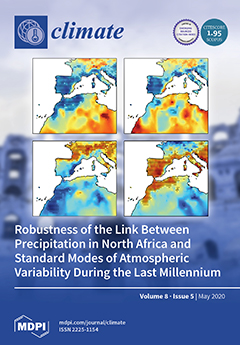In this work, a semi-empirical relationship of carbon dioxide emissions with atmospheric CO
2 concentrations has been developed that is capable of closely replicating observations from 1751 to 2018. The analysis was completed using data from fossil-fuel-based and land-use change based CO
2
[...] Read more.
In this work, a semi-empirical relationship of carbon dioxide emissions with atmospheric CO
2 concentrations has been developed that is capable of closely replicating observations from 1751 to 2018. The analysis was completed using data from fossil-fuel-based and land-use change based CO
2 emissions, both singly and together. Evaluation of emissions data from 1750 to 1890 yields a linear CO
2 concentration component that may be attributed to the net flux from land-use changes combined with a rapidly varying component of the terrestrial sink. This linear component is then coupled across the full-time period with a CO
2 concentration calculation using fossil-fuel combustion/cement production emissions with a single, fixed fossil-fuel combustion airborne fraction [AF
FF] value that is determined by the ocean sink coupled with the remaining slowly varying component of the land sink. The analysis of the data shows that AF
FF has remained constant at 51.3% over the past 268 years. However, considering the broad range of variables including emission and sink processes influencing the climate, it may not be expected that a single value for AF
FF would accurately reproduce the measured changes in CO
2 concentrations during the industrial era.
Full article





